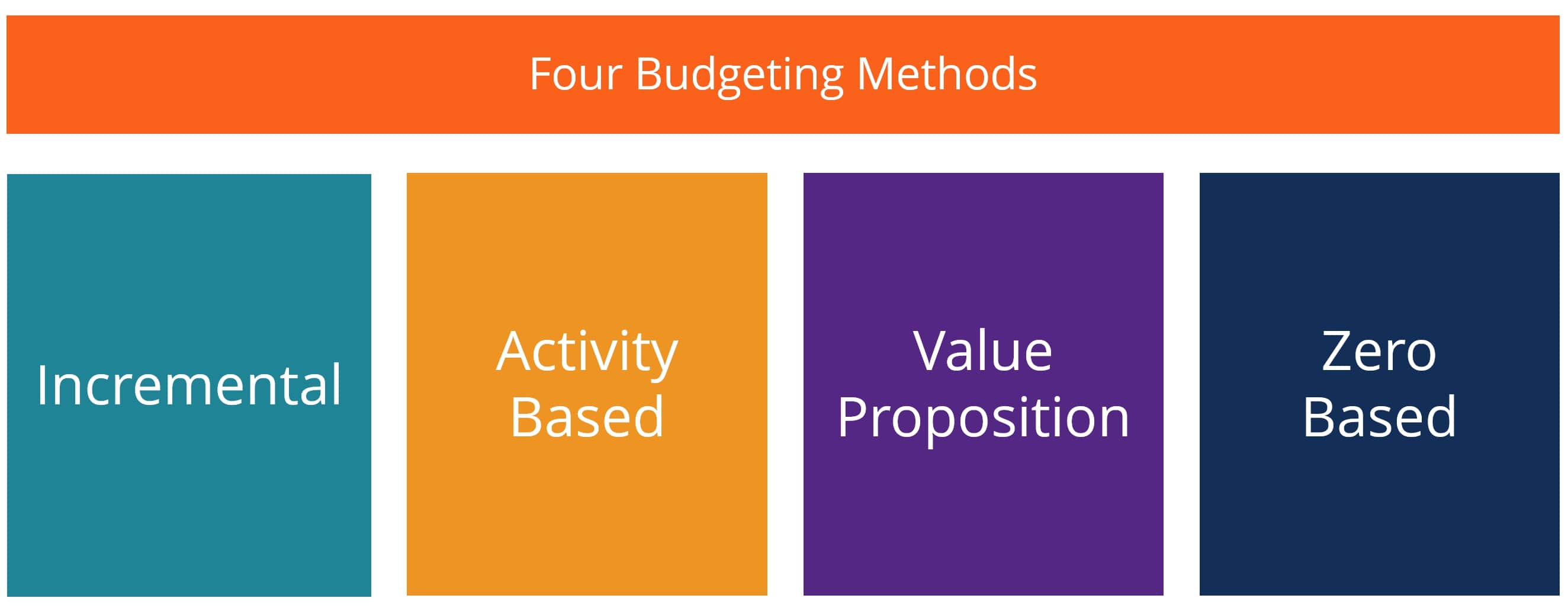

Finance
Which Investment Option Is The Most Illiquid?
Modified: February 21, 2024
Discover which investment option in finance is considered the most illiquid. Explore the risks and benefits of investing in illiquid assets and make informed financial decisions.
(Many of the links in this article redirect to a specific reviewed product. Your purchase of these products through affiliate links helps to generate commission for LiveWell, at no extra cost. Learn more)
Table of Contents
Introduction
Welcome to the world of investments, where individuals and organizations allocate their resources with the aim of generating returns in the long run. While there are various investment options available, one crucial factor to consider is liquidity. Liquidity refers to the ease with which an asset or investment can be bought or sold without causing significant price changes. In other words, it measures how quickly an investor can convert their investment into cash.
Understanding the concept of liquidity is essential because it directly impacts the flexibility and accessibility of your investment. Some investments may provide instant liquidity, allowing you to access your funds whenever you need them, while others may be less liquid, requiring you to lock in your investment for a certain period before it can be converted into cash.
Illiquidity, on the other hand, refers to the degree to which an investment asset or option lacks liquidity. Illiquid investments are those that cannot be easily converted into cash without incurring significant costs or experiencing delays in the transaction process.
In this article, we will explore various investment options and determine which one is the most illiquid. By understanding the factors that contribute to asset liquidity and evaluating different investment types, you can make more informed decisions and mitigate any potential risks associated with illiquidity.
Understanding Liquidity
Liquidity is a crucial aspect of any investment strategy. It refers to how easily an asset or investment can be converted into cash without causing significant price changes. In essence, liquidity measures the ease with which you can buy or sell an investment option in the market.
A highly liquid investment can be quickly converted into cash, often at or near its market value, with minimal transaction costs. On the other hand, an illiquid investment may take longer to sell or may require additional efforts, such as finding a buyer willing to purchase the asset at a reasonable price.
Liquidity is essential for a variety of reasons. Firstly, it provides investors with the flexibility to access their funds when needed. If an emergency arises or an opportunity to invest in a more favorable option arises, having liquid assets allows investors to quickly convert their investments into cash.
Secondly, liquidity helps ensure market efficiency. When there is a high level of liquidity, it means that there are enough buyers and sellers in the market, resulting in tighter bid-ask spreads and lower transaction costs. This contributes to a more efficient market where prices reflect the true value of the assets.
Lastly, liquidity adds a layer of risk management. Illiquid investments can be riskier because they may require a longer holding period, restricting the investor’s ability to exit the investment if market conditions change or if there is a need for immediate access to funds.
It’s important to note that the level of liquidity can vary across different investment options. Some investments, such as publicly traded stocks and bonds, generally offer high liquidity due to active markets and a large number of market participants. On the other hand, alternative investments, such as real estate or private equity, often have lower liquidity levels due to the nature of the assets and the limited number of buyers and sellers.
Understanding liquidity is crucial for investors as it helps them assess the degree of risk associated with an investment option. By considering factors such as the asset’s market depth, trading volume, and the time it takes to complete a transaction, investors can make informed decisions and align their investment choices with their liquidity requirements and risk tolerance.
Definition of Illiquidity
Illiquidity refers to the degree to which an investment asset or option lacks liquidity, making it difficult to convert into cash quickly and at a fair price. In simple terms, illiquid investments are those that cannot be easily sold or converted without facing significant challenges or costs.
There are several factors that contribute to the illiquidity of an investment. One of the primary factors is the availability of buyers and sellers in the market. Illiquid investments often have a limited pool of potential buyers, making it harder to find a willing buyer when you want to sell your investment.
Another factor is the time it takes to complete a transaction. Illiquid investments typically involve longer transaction periods compared to more liquid assets. This is because finding a buyer and negotiating the terms of the sale can be a time-consuming process.
Furthermore, the nature of the investment asset itself can contribute to its illiquidity. Certain investments, such as real estate or rare collectibles, may have a limited number of interested buyers, making it more challenging to sell them quickly. Similarly, investments in privately held companies or venture capital funds can be highly illiquid, as there may be restrictions on selling the shares or limited opportunities to find a buyer.
Illiquidity can also be influenced by market conditions. During periods of economic instability or financial downturns, market liquidity tends to decrease as investors become more risk-averse and hesitant to buy or sell assets. As a result, illiquid investments may be even harder to sell during these times, potentially leading to significant delays or discounted prices.
It’s important for investors to consider the level of illiquidity associated with an investment option, as it can impact their ability to access funds when needed or make changes to their investment strategy. Illiquid investments may require a long-term commitment, tying up capital for an extended period and potentially limiting the investor’s ability to capitalize on other opportunities.
Overall, understanding the concept of illiquidity is crucial for investors to make informed decisions and manage their investment portfolios effectively. By weighing the risks and benefits of illiquid investments and considering their liquidity needs and investment objectives, investors can strike a balance between potential returns and the ability to access their funds when required.
Factors Affecting Asset Liquidity
Asset liquidity is influenced by a variety of factors that can impact the ease with which an investment can be bought or sold in the market. These factors play a significant role in determining the level of liquidity associated with a particular investment option. Let’s explore some of the key factors that affect asset liquidity:
- Market Depth: The depth of a market refers to the number of buyers and sellers actively participating in the market. A deep market with a large number of participants generally indicates higher liquidity, as there are more potential buyers and sellers to match orders.
- Trading Volume: Trading volume refers to the number of shares or contracts traded within a specific period. Higher trading volumes typically indicate higher liquidity, as there is greater activity and turnover in the market. In liquid markets, a large number of transactions can be executed without significantly impacting the asset’s price.
- Bid-Ask Spread: The bid-ask spread is the difference between the highest price a buyer is willing to pay (bid) and the lowest price a seller is willing to accept (ask) for an asset. A narrower bid-ask spread generally indicates higher liquidity, as the gap between buying and selling prices is smaller, making it easier to execute trades without incurring significant price slippage.
- Time to Complete a Transaction: The time required to complete a transaction can impact the liquidity of an asset. Highly liquid investments can be bought or sold quickly, while illiquid assets may require more time and effort to find a buyer or negotiate the terms of the sale.
- Market Conditions: Market conditions, such as economic stability, investor sentiment, and overall market activity, can impact the liquidity of assets. During periods of financial turmoil or economic uncertainty, liquidity may decrease as investors become more risk-averse and hesitant to participate in the market.
- Regulatory Restrictions: Regulatory restrictions can also affect asset liquidity, particularly in the case of certain investment types, such as private equity or hedge funds. These investments may be subject to restrictions on selling shares or may have limited opportunities for buyers, making them less liquid.
- Asset Characteristics: The characteristics of the asset itself can significantly impact its liquidity. Assets that are unique or have a limited number of interested buyers, such as real estate or rare collectibles, tend to be less liquid compared to more widely traded assets like stocks or bonds.
It’s important for investors to consider these factors when evaluating the liquidity of an investment option. By understanding the elements that contribute to asset liquidity, investors can make more informed decisions and align their investment choices with their liquidity needs and risk tolerance.
Evaluating Investment Options for Liquidity
When it comes to investing, evaluating the liquidity of different investment options is crucial. The level of liquidity can vary significantly across various investment types, and understanding this aspect is essential for making informed investment decisions. Here are some factors to consider when evaluating the liquidity of different investment options:
- Market Accessibility: Consider the accessibility of the investment option. Is it traded on a public exchange, making it easy to buy and sell? Publicly traded stocks and bonds are generally highly liquid because they have active markets with a large number of buyers and sellers.
- Trading Volumes: Evaluate the average daily trading volumes of the investment option. Higher trading volumes suggest higher liquidity as there is more market activity and turnover. An investment with low trading volumes may be less liquid, with potentially larger bid-ask spreads and longer time to complete transactions.
- Market Depth: Assess the depth of the market for the investment option. A deep market with numerous participants indicates higher liquidity. Liquid markets generally have tighter bid-ask spreads, allowing for easier execution of trades without significant price impacts.
- Transaction Costs: Take into account the associated transaction costs of buying or selling the investment. Assets with higher liquidity tend to have lower transaction costs due to tighter bid-ask spreads and higher trading volumes. Illiquid investments may involve higher transaction costs due to wider bid-ask spreads and the difficulty of finding potential buyers or sellers.
- Time to Complete Transactions: Consider the time it takes to complete a transaction. Liquid investments can be bought or sold quickly, often in a matter of seconds or minutes. On the other hand, illiquid investments may require a significant amount of time to find the right buyer or negotiate the terms of the sale.
- Asset Lock-In: Determine if there are any restrictions on buying or selling the investment. Some investments, such as hedge funds or private equity, may have lock-up periods where capital is tied up for a specific duration. These lock-up periods limit liquidity and restrict an investor’s ability to exit the investment before the specified time.
- Market Volatility: Consider the impact of market volatility on the investment’s liquidity. During periods of high market volatility, liquidity can decrease as investors become more risk-averse and hesitant to buy or sell assets. Illiquid investments may face additional challenges during volatile times.
- Exit Options: Evaluate the available exit options for the investment. Highly liquid investments typically offer multiple exit options, such as secondary markets or exchange-traded funds (ETFs), providing investors with flexibility. Illiquid investments may have limited exit options, making it harder to sell the investment when desired.
By carefully evaluating these factors, investors can assess the liquidity of different investment options and align their choices with their liquidity needs and risk tolerance. It’s important to strike a balance between the desired level of liquidity and the potential returns and risks associated with the investment option.
Real Estate Investments
Real estate investments are known for their potential to provide steady income and long-term appreciation. However, when it comes to liquidity, real estate investments tend to be more illiquid compared to other investment options. Here are some factors that contribute to the illiquidity of real estate investments:
- Transaction Process: Selling a property involves a complex transaction process that can take a considerable amount of time. Finding a buyer, negotiating the terms of the sale, completing inspections, and addressing legalities can all contribute to delays in completing the transaction.
- Market Conditions: Real estate liquidity can be influenced by market conditions. During periods of economic downturn or reduced demand, selling a property can become even more challenging, as there may be fewer potential buyers or decreased willingness to invest in real estate.
- Property Type and Location: The type and location of the property can also impact its liquidity. Some property types, such as residential homes or commercial buildings in prime locations, may attract more potential buyers and have higher liquidity. On the other hand, niche or specialized properties in less desirable locations may have limited buyer interest and take longer to sell.
- Timing Considerations: Timing plays a crucial role in real estate liquidity. Selling in a buyer’s market can be more challenging, as there may be more properties available for sale, increasing competition and potentially leading to lower prices. Selling in a seller’s market, on the other hand, may result in quicker sales and potentially higher prices.
- Valuation Challenges: Valuing real estate can be complex, and the lack of standardized valuation methods can contribute to price discrepancies in the market. This can make it harder to determine an accurate market price, potentially leading to prolonged negotiations or difficulties in finding buyers willing to meet the desired price.
Despite the challenges of illiquidity, real estate investments offer unique advantages such as cash flow, potential tax benefits, and the potential for appreciation over the long term. However, it’s important for investors to carefully consider their liquidity needs and time horizon before investing in real estate.
Investors can mitigate the illiquidity of real estate investments by diversifying their portfolios, maintaining a long-term investment approach, and carefully assessing market conditions before buying or selling properties. Additionally, investment vehicles such as real estate investment trusts (REITs) or real estate crowdfunding platforms provide investors with more liquid alternatives to direct property ownership.
Overall, real estate investments can offer attractive returns, but it’s important to recognize and factor in the illiquidity associated with this asset class. By understanding the factors that contribute to real estate illiquidity and carefully planning their investment strategy, investors can effectively navigate the real estate market and capitalize on its potential benefits.
Private Equity Investments
Private equity investments are known for their potential for high returns, but they also come with a high level of illiquidity. These investments involve acquiring shares or ownership stakes in private companies that are not traded on public stock exchanges. Here are some factors that contribute to the illiquidity of private equity investments:
- Lock-Up Periods: Private equity investments often come with lock-up periods, during which investors are unable to sell their shares or exit the investment. The lock-up period can range from several years to more than a decade, depending on the investment fund’s structure and strategy.
- Limited Market: The market for private equity investments is much smaller compared to publicly traded stocks. The limited number of potential buyers makes it more challenging to find someone willing to purchase the shares, leading to longer holding periods and potential delays in exiting the investment.
- Price Discovery: Unlike publicly traded stocks, private equity investments lack daily market prices. Establishing the fair value of these investments can be challenging, and the illiquidity further complicates the pricing process. Determining a fair market price may require professional valuation or negotiation between parties.
- Exit Options: The exit options for private equity investments are often limited. The most common exit strategies for private equity investors include mergers and acquisitions, initial public offerings (IPOs), or selling their stake to another private equity firm. These exit options can be time-consuming and may require favorable market conditions to secure a profitable exit.
- Capital Commitment: Private equity investments typically require a substantial capital commitment from investors. Once the capital is allocated, it may not be easily accessible until the investment’s term ends or a suitable exit opportunity arises.
Despite the challenges of illiquidity, private equity investments can be highly lucrative for investors due to the potential for significant capital appreciation and substantial returns. However, it’s important to carefully assess and understand the illiquidity risks associated with private equity investments before committing capital.
Investors considering private equity should have a long-term investment horizon and be willing to lock up their capital for the designated period. It’s also important to conduct thorough due diligence on the investment fund and evaluate the fund manager’s track record and expertise in managing illiquid assets.
Some investors may opt for indirect exposure to private equity through a fund of funds or exchange-traded fund (ETF), which provides a more liquid alternative. These vehicles pool investments in various private equity funds, offering diversification and liquidity advantages compared to direct investments.
In summary, private equity investments offer the potential for high returns, but investors must be aware of the illiquidity associated with this asset class. By understanding the unique features of private equity investments and aligning their investment objectives, time horizons, and risk tolerance, investors can make informed decisions and potentially benefit from the rewards of this investment strategy.
Hedge Fund Investments
Hedge fund investments are known for their flexibility and ability to generate high returns. However, they are also characterized by a higher level of illiquidity compared to traditional investment options. Here are some factors that contribute to the illiquidity of hedge fund investments:
- Lock-Up Periods: Hedge funds often have lock-up periods during which investors are restricted from withdrawing their capital. These lock-up periods can range from several months to multiple years, limiting investors’ access to their funds and creating illiquidity.
- Redemption Notice Periods: Hedge fund investors typically need to provide advance notice of their intent to redeem their investments. This notice period can range from a few weeks to several months, creating a delay before investors can access their funds. During this time, the fund manager may have to liquidate assets to meet redemption requests, which can further impact the fund’s liquidity.
- Investment Strategies: Hedge funds often employ complex and specialized investment strategies. These strategies may involve investments in illiquid assets, such as private equity, distressed debt, or real estate. The illiquidity of these underlying assets can translate into decreased liquidity for the overall hedge fund.
- Fund Size: The size of a hedge fund can affect its liquidity. Large hedge funds may face challenges in finding suitable investment opportunities and efficiently managing investor redemptions. As funds grow, managing liquidity becomes increasingly important to ensure that the fund remains able to meet redemption requests without overly impacting overall fund performance.
- Market Conditions: Hedge fund liquidity can be influenced by market conditions. During periods of market stress or economic downturns, market liquidity may decrease, making it more challenging for hedge funds to execute trades or liquidate positions. This illiquidity can impact investors’ ability to withdraw their funds promptly.
Despite the illiquidity associated with hedge fund investments, many investors are attracted to their potential for high returns. Hedge funds have the flexibility to invest in a wide range of asset classes and employ various investment strategies to generate alpha—returns above a benchmark.
Investors considering hedge funds should carefully evaluate their liquidity needs and investment objectives. They should be prepared to commit their capital for a designated period, considering the lock-up and redemption notice periods associated with hedge fund investments. Additionally, conducting thorough due diligence on fund managers, their investment strategies, and track records is crucial to understanding the potential risks and returns.
It’s important to note that there are various hedge fund investment vehicles available, such as fund of funds or hedge fund ETFs, which offer more liquidity and diversification compared to investing directly in individual hedge funds.
In summary, hedge fund investments provide the potential for high returns but come with a higher level of illiquidity. Understanding the factors contributing to hedge fund illiquidity and carefully assessing investment objectives and liquidity needs can help investors make informed decisions and potentially benefit from the unique features of these investment vehicles.
Collectibles and Art Investments
Investing in collectibles and art can be an exciting and potentially rewarding venture. However, these types of investments are often highly illiquid compared to traditional financial instruments. Here are some factors that contribute to the illiquidity of collectibles and art investments:
- Limited Market: The market for collectibles and art is relatively small and limited compared to more mainstream assets. Finding a buyer or seller for a specific piece of artwork or collectible item can be challenging, particularly if it possesses unique or niche characteristics.
- Specialized Knowledge: Investing in collectibles and art often requires specialized knowledge and expertise. The valuation of these assets can be subjective and reliant on the opinions of industry experts. Assessing the potential market value and finding interested buyers can be more complex compared to traditional financial investments.
- Price Volatility: The prices of collectibles and art can be subject to significant fluctuations due to changing market trends, supply and demand dynamics, and the influence of individual artist or creator reputations. These fluctuations can make it difficult to determine an accurate and fair market price, impacting the liquidity of these investments.
- Authentication and Verification: Establishing the authenticity and provenance of collectibles and art is crucial. Buyers are often cautious and require thorough verification before making a significant investment. This process can prolong the transaction period and potentially impact liquidity.
- Market Conditions: Like any investment, the liquidity of collectibles and art can be influenced by market conditions. Economic downturns or market uncertainty may lead to a decrease in buyer demand and liquidity. However, during periods of economic prosperity, the market for high-quality collectibles and art tends to be more active.
Despite their illiquidity, collectibles and art investments offer the potential for strong returns, particularly in cases where rare and desirable pieces are involved. These investments can provide aesthetic enjoyment, act as a store of value, and offer portfolio diversification benefits.
Investors interested in collectibles and art should be patient, have a long-term perspective, and carefully assess their liquidity requirements. It’s crucial to conduct proper due diligence, work with reputable dealers or auction houses, and seek expert advice to navigate the market successfully.
For those seeking more liquid exposure to the collectibles and art market, investment vehicles such as art funds or exchange-traded funds (ETFs) provide investment opportunities in diversified art portfolios or invest in companies engaged in the art market. These liquid alternatives can offer greater access and diversification compared to direct ownership of individual pieces.
While the illiquidity of collectibles and art investments may present challenges, investors with a passion for art and collectibles and a willingness to carefully navigate the market can potentially enjoy financial and aesthetic rewards.
Precious Metals Investments
Investing in precious metals, such as gold, silver, platinum, and palladium, has long been a popular choice for investors seeking to diversify their portfolios and hedge against inflation. While precious metals offer certain advantages, they also come with a level of illiquidity. Here are some factors that contribute to the illiquidity of precious metals investments:
- Market Size: The precious metals market is relatively smaller compared to other financial markets, such as stocks or bonds. While gold has a more liquid market due to its universal recognition, other precious metals may have a smaller pool of buyers and sellers, making it harder to find a match for trades.
- Physical Ownership: Physical ownership of precious metals, such as bullion or coins, can pose challenges in terms of liquidity. Selling physical metals often requires finding a buyer, verifying the quality and authenticity of the metal, and arranging for secure delivery or storage. These factors can add complexity and time to the transaction process.
- Storage and Transportation: Precious metals require safe and secure storage facilities, which may incur additional costs. Transportation and insurance of the precious metals also need to be taken into account, especially when dealing with large volumes or high-value holdings.
- Limited Use: Precious metals have limited industrial use compared to other commodities, which can further impact their liquidity. While gold and silver have wide utility across various industries, other precious metals like palladium and platinum are more specialized and have a smaller market demand.
- Market Volatility: Precious metals are prone to price fluctuations, influenced by economic conditions, geopolitical factors, and investor sentiment. Sharp price movements can impact the liquidity of precious metal investments, as buyers and sellers may adjust their trading activities based on market conditions.
Despite the challenges of illiquidity, precious metals have been favored for their ability to act as a store of value and serve as a tangible asset in times of economic uncertainty. They offer a hedge against inflation and can provide diversification benefits to an investment portfolio.
To enhance liquidity, investors can consider alternative investment vehicles such as precious metals ETFs or futures contracts. These instruments provide exposure to precious metals without the need for physical ownership, allowing for easier buying and selling in the financial markets.
When investing in precious metals, it is important for investors to carefully consider their investment objectives, time horizon, and liquidity requirements. Precious metals can be a valuable addition to a well-diversified portfolio, but investors should be aware of the potential challenges related to their illiquidity and take appropriate measures to mitigate these risks.
Conclusion
Understanding the liquidity of investment options is critical for investors seeking to make informed decisions and manage their portfolios effectively. The level of liquidity can significantly impact an investor’s ability to access funds, respond to changing market conditions, and capitalize on new investment opportunities. Throughout this article, we have explored various investment options and evaluated their liquidity profiles.
From real estate and private equity to hedge funds, collectibles, and precious metals, each investment option presents unique liquidity challenges. Real estate investments, while offering potential long-term returns, tend to be less liquid due to transaction complexities and market conditions. Private equity investments offer high potential returns, yet investors have limited access to their capital during lock-up periods, making them highly illiquid.
Hedge funds provide flexibility but often come with lock-up and redemption notice periods, impacting liquidity. Collectibles and art investments can be illiquid due to limited markets, specialized knowledge requirements, and price volatility. Precious metals investments, although valued for their store of value and diversification benefits, face challenges in terms of market size and physical ownership complexities.
Ultimately, investors must carefully evaluate their liquidity needs, investment objectives, and risk tolerance before allocating capital to these investment options. They should consider factors such as market accessibility, trading volumes, bid-ask spreads, time to complete transactions, and market conditions when assessing liquidity.
In cases where liquidity is of utmost importance, investors may opt for more liquid alternatives within these asset classes, such as real estate investment trusts (REITs), exchange-traded funds (ETFs), or precious metals ETFs. These vehicles provide more accessible and diversified exposure with improved liquidity compared to direct ownership.
In conclusion, achieving a balanced investment portfolio involves understanding the liquidity characteristics of different investment options. By aligning investment goals, liquidity requirements, and risk tolerance, investors can navigate illiquid investments while still enjoying the potential benefits they offer. Diligent research, diversification, and appropriate asset allocation are key elements to successfully managing investments within the context of liquidity.














